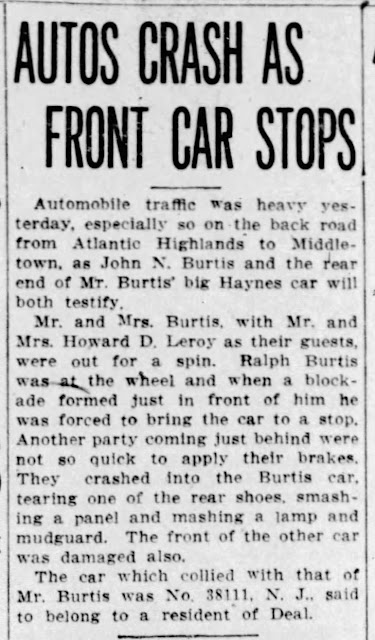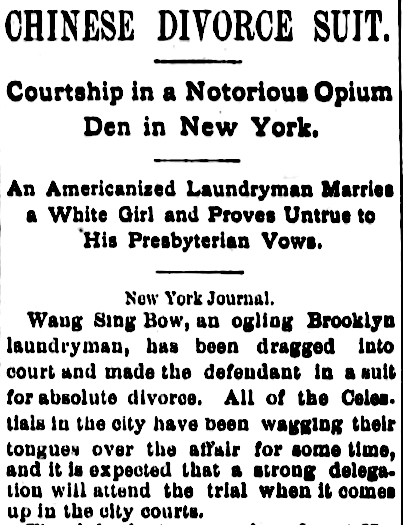Nineteen hundred and twelve was a year of disasters, around the world and at the Jersey Shore. In April Mr. and Mrs. French, two summer residents of Allenhurst, died aboard the Titanic on their voyage home from Italy, and in early July, only three weeks before the hit-and-run between Undertaker Burtis and Sadie Brady at Atlantic Highlands Bridge, the Dunes Hotel burned to the ground.
 |
 |
| Asbury Park Press, 10 Jul 1912 |
"I want to see where she lives." It was Lizzie's idea, Ginny Burtis's friend, who was in the Burtises' new touring car for a Sunday drive when they were rear-ended by Sadie Brady's party.
That evening of the same day, a few short hours after the accident, the Burtis son drove his parents, the Leroys and the family dog along Ocean avenue in Allenhurst. It was their second weekend trip to view the devastation of the hotel fire in the crowd of gawkers from all over New Jersey, Philadelphia and New York City. Some were fascinated by the finds of scavengers or "miners" who picked through the debris for trinkets from hotel guests but there was too much traffic to linger. Two full weeks afterwards the scene still looked like a ravaged battlefield.
"Terrible loss," Burtis said as his thoughts jumped to his big beautiful house in Asbury Park, all wood. "Hotels can't be made of wood. Their big kitchens and people smoking. Too risky."
"The Schultz family's building it back in brick," Lizzie said.
"Hm." John sighed. She said the same thing every time the subject came up. The group tried to imagine a new grand hotel at the scene of the devastation.
"Let's move on," John said. "I want to see where this lady lives." A friend on the police force whose cousin worked at an Allenhurst garage had phoned Burtis about a young man who had returned a damaged car. "He's staying with his aunt on Corlies."
"I know that house," Ginny said. "It's around the corner from the Guggenheim cottage."
As the group came upon Spier avenue they espied the Guggenheim cottage and commiserated over Mrs. Guggenheim's loss and the other summer residents who drowned in the Titanic.
 |
| The Guggenheim cottage on Spier avenue |
 |
| Sadie Brady's cottage on Corlies avenue |
"Well. It's a miracle it's still here," Ginny said.
Looking down Corlies avenue they could see the charred hotel and what was left of cottages.
 |
| Sadie Brady's cottage (bottom left), Dunes Hotel (bottom right), Guggenheim cottage on the south side of Spier avenue Sanborn Fire Insurance Map, Image 12 (1905-09) |
"Why do these people stay, I wonder," Lizzie said. "The smell, the devastation, vagabonds milling about-- Who could think of spending the summer here?"
"Because it's paid for? Maybe she's cheap," John said.
A dog tearing past their car interrupted the conversation, and the Burtis's dog jumped out to chase it.
"Fritz, come back!" Ginny cried.
"Step on it, Ralph," Burtis said, and young Ralph drove as fast as their new beat-up car would go after their beloved dog.
"Oh Fritz," Ralph said.
 |
| Asbury Park Press, 31 Jul 1912 Home of John E. Wise, caretaker of cottages and recidivist thief |
NOTE: Cottage photos from Allenhurst Residential Historic District report, 2010
Contact: Debbie Carter, VillagerExpat@aol.com, (212) 925-3721



























